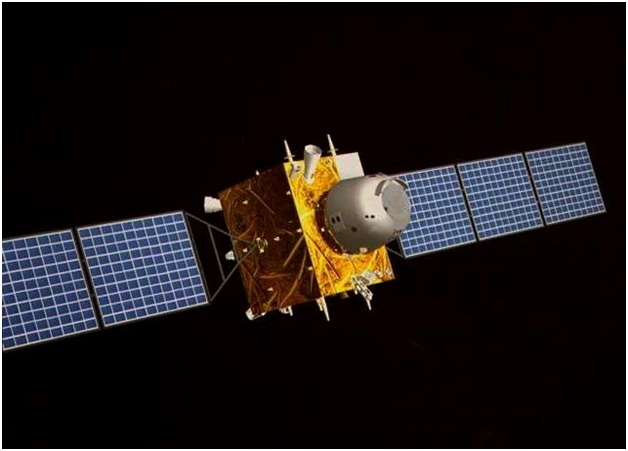On October 23, 2014 China launched a lunar probe called Chang'e 5 T1 on a Long March-3C rocket. The main purpose of the probe (nicknamed Xiaofei) was to test technologies and techniques for high speed reentry into Earth's atmosphere. The findings of these tests will be incorporated into the Chang'e 5 lunar mission to be launched in 2017.
The Xiaofei probe entered the Earth atmosphere on October 31, 2014 after the eight day mission which flew around the Moon. The probe performed what is called a "skip" re-entry process. It hit the Earth's atmosphere at twenty five thousand miles an hour. The probe bounced off the atmosphere to reduce speed and then re-entered the atmosphere to land at a location in China's Inner Mongolia Autonomous Region. The skip process is analogous to skipping a stone on a lake. The purpose of the maneuver is to shorten the "braking distance" for a returning space probe.
China's Chang'e lunar space program started with the launch of Chang'e 1 in 2007 and Chang'e 2 in 2010 which both successfully orbited the moon. Then the Chang'e 3 landed on the Moon in late 2013 and dispatched the Yutu rover to explore. Following the successful mission of the Chang'e 5 T1 to test capabilities, the Chang'e 5 mission in 2017 will go to the moon, land, take samples from the lunar surface and return to Earth. The Chang'e 5 will perform the skip process for re-entry to return about four and one half pounds of rocks from the Moon.
The Chang'e 5 mission will be launched on a Long March 5 rocket from a new launch facility that is still under construction. The Wenchang Satellite Launch Center (WSLC) in Hainan province. The WSLC is being constructed to handle the next-generation of Chinese rockets which will be used to launch large space station modules and deep-space missions. It will be host to the Long March 5 rocket which is still under development. The Long March 5 will make see its first launch in 2015.
U.S. space scientists point out that with the completion of the Chang'e 5 mission in 2017, China will have experience in all phases necessary to launch astronauts to land on the Moon and return to Earth. China has published articles about future missions to the Moon. Recently, Chinese scientists working in the energy production field have discussed the possibility of mining helium-3 or tritium on the Moon. Tritium has been designated as a possible fuel for nuclear fusion reactors which are currently under development. Tritium is present in all the water on Earth but in minute amounts that would be expensive to extract. However, billions of years of bombardment by the solar wind have resulted in substantial levels of tritium on the surface of the Moon. If nuclear fusion reactors that run on tritium can be developed, there is enough tritium on the Moon to supply Earth's energy needs for thousands of years.
Artist's concept of the Chang'e 5 T1 lunar probe:
